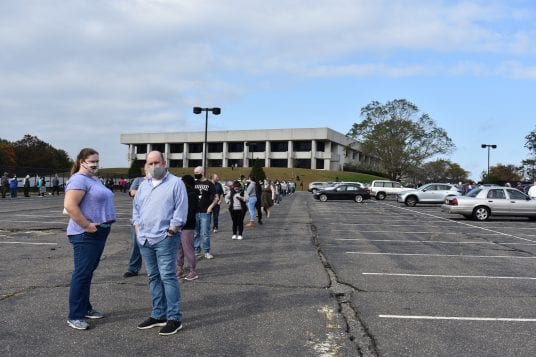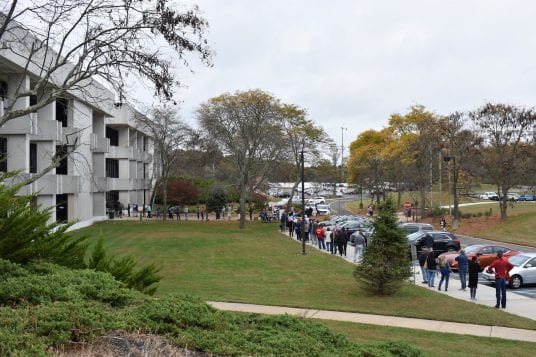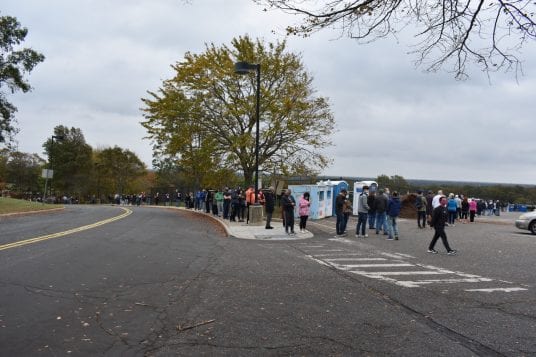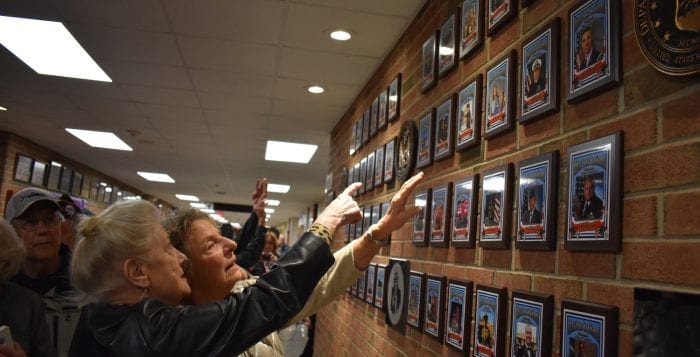U.S. and Suffolk officials announced the indictment of 15 individuals, including several North Shore and Middle Country residents, as part of an alleged drug ring.
Suffolk County District Attorney Tim Sini (D), the U.S. Drug Enforcement Administration and the DEA’s Long Island Heroin Task Force today announced the indictment, saying all were either part of gangs or were helping to distribute drugs including fentanyl, meth, cocaine and marijuana.
“My Office has made it clear that gangs and drugs have no place in our communities,” Sini said in a release.
The Suffolk DA’s office, DEA and DEA’s Long Island Heroin Task Force began an investigation in the fall of 2019 into alleged drug dealing by several gang members and associates primarily in the Town of Brookhaven. The investigation involved the use of undercover officers, roving surveillance, electronic surveillance, and court authorized eavesdropping.
Search warrants were executed Sept. 16 at three residential locations in Ronkonkoma, Coram and Central Islip, during which law enforcement recovered approximately 12 grams of crack cocaine, nine grams of fentanyl, 51 grams of methamphetamines, 12 grams of marijuana, and various paraphernalia consistent with drug sales, including cutting agent, packaging materials and a scale. Law enforcement also seized a loaded .22 caliber handgun, a loaded .40 caliber handgun and a loaded .38 caliber revolver from the locations.
On Sept. 29, search warrants were executed at five additional locations in connection with the investigation in Farmingville, Middle Island, Coram and Centereach. Law enforcement recovered approximately 711 grams of heroin/fentanyl, 99 grams of heroin, 109 grams of cocaine, 116 grams of crack cocaine, 18 grams of Oxycodone pills, 12 ounces of marijuana, and various paraphernalia consistent with drug sales, including a hydraulic kilo press, digital scales, and packaging materials. Law enforcement also seized a loaded 9mm Smith and Wesson handgun and a loaded Jennings .22 caliber handgun from the locations.
“This investigation exemplifies the symbiotic relationship between illegal drugs and gun violence,” said DEA Special Agent in Charge Ray Donovan in the release. “These arrests emphasize DEA’s commitment to reducing violent crime and reclaiming our communities from menacing drug trafficking networks and gangs.”
Among five individuals from Coram, one person from Central Islip and one person of Middle Island, North Shore and Middle Country residents arrested include:
Angelo Mosquea. a/k/a “Pun,” 30, of Port Jefferson Station, is charged with two counts of criminal possession of a controlled substance in the third degree, a B felony, and conspiracy in the second degree, a B felony.
Daniel McIntyre, 36, of Centereach, is charged with criminal possession of a controlled Substance in the third degree, a B felony, and conspiracy in the second degree, a B felony.
Marcus Numa, 36, of Centereach, is charged with criminal possession of a controlled substance in the first degree, an A felony; criminal possession of a controlled substance in the third degree, a B felony; and conspiracy in the second degree, a B felony.
David Torres, 28, of Port Jefferson, is charged with conspiracy in the second degree, a B felony.
Wayne Swedberg, 29, of Rocky Point, is charged with conspiracy in the second degree, a B felony.
Bryan Kalikow, 33, of Kings Park, is charged with conspiracy in the second degree, a B felony.
Michael Hionas, 32, of Port Jefferson Station, is charged with conspiracy in the second degree, a B felony.
An arrest warrant has been issued for one additional defendant in the indictment.
Among others, McIntyre have been identified by law enforcement as alleged members of the Bloods gang. The DA said two other individuals were alleged member of the Latin Kings.
Angelo Mosquea and McIntyre were arraigned on the indictment today by Suffolk County Court Judge Philip Goglas. Others were arraigned on the indictment Oct. 16 by Suffolk County Acting Supreme Court Justice Mark Cohen. The remaining defendants were arraigned on the indictment Oct. 27 by Judge Goglas.
If convicted of the top count, Angelo Mosquea, Hionas and McIntyre each face a maximum sentence of 12 and one-half to 25 years in prison. If convicted of the top count, Numa, Torres, Swedberg and Kalikow each face a maximum sentence of eight and one-third to 25 years in prison.
This case is being prosecuted by Assistant District Attorney Deirdre Horney, of the Enhanced Prosecution Bureau.

























